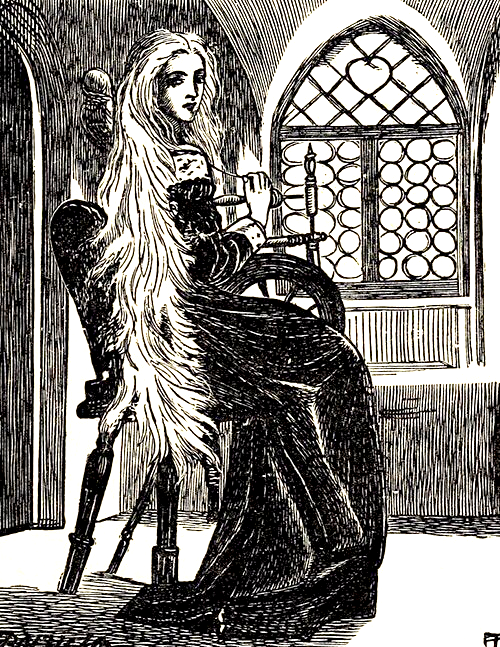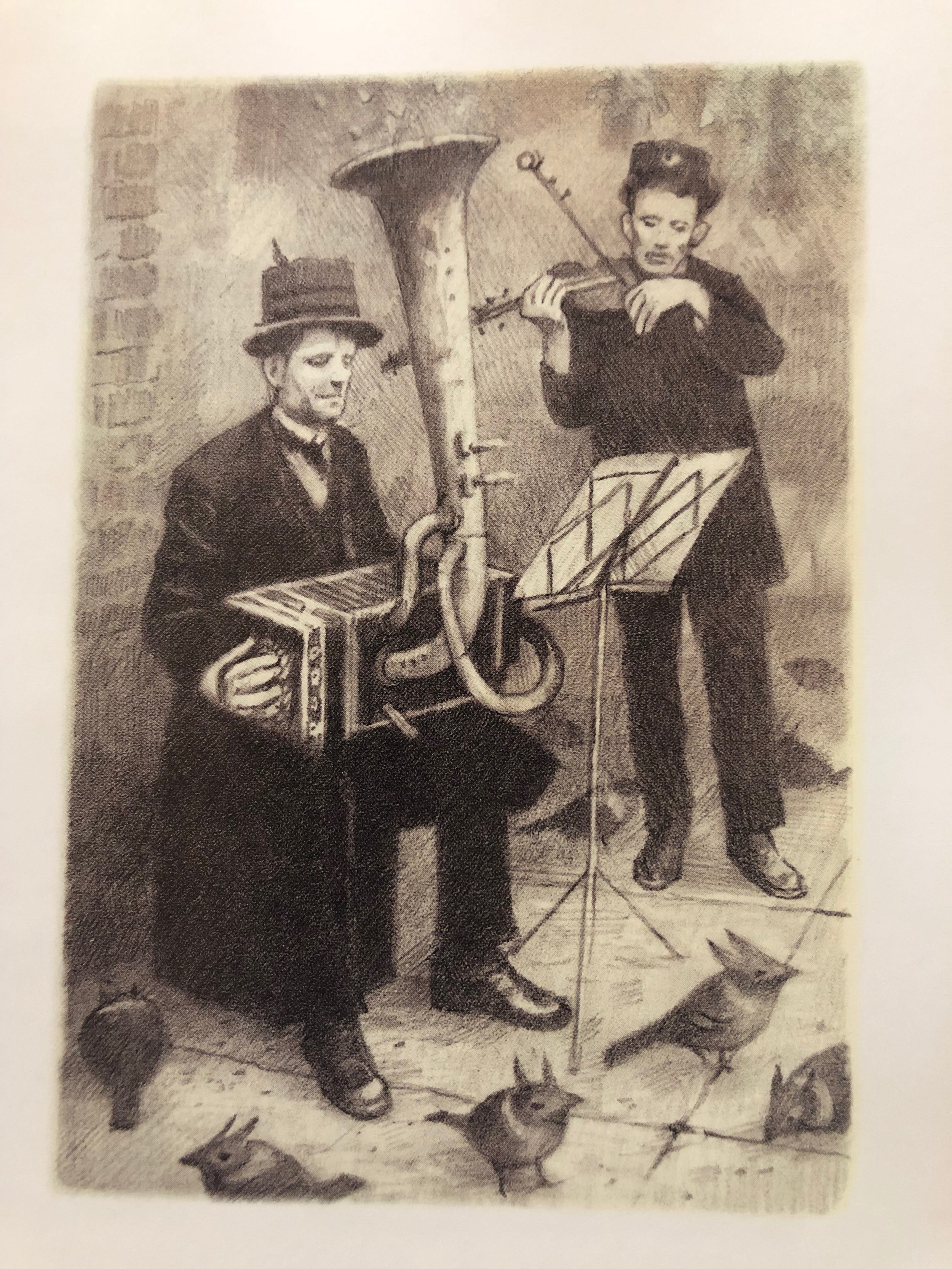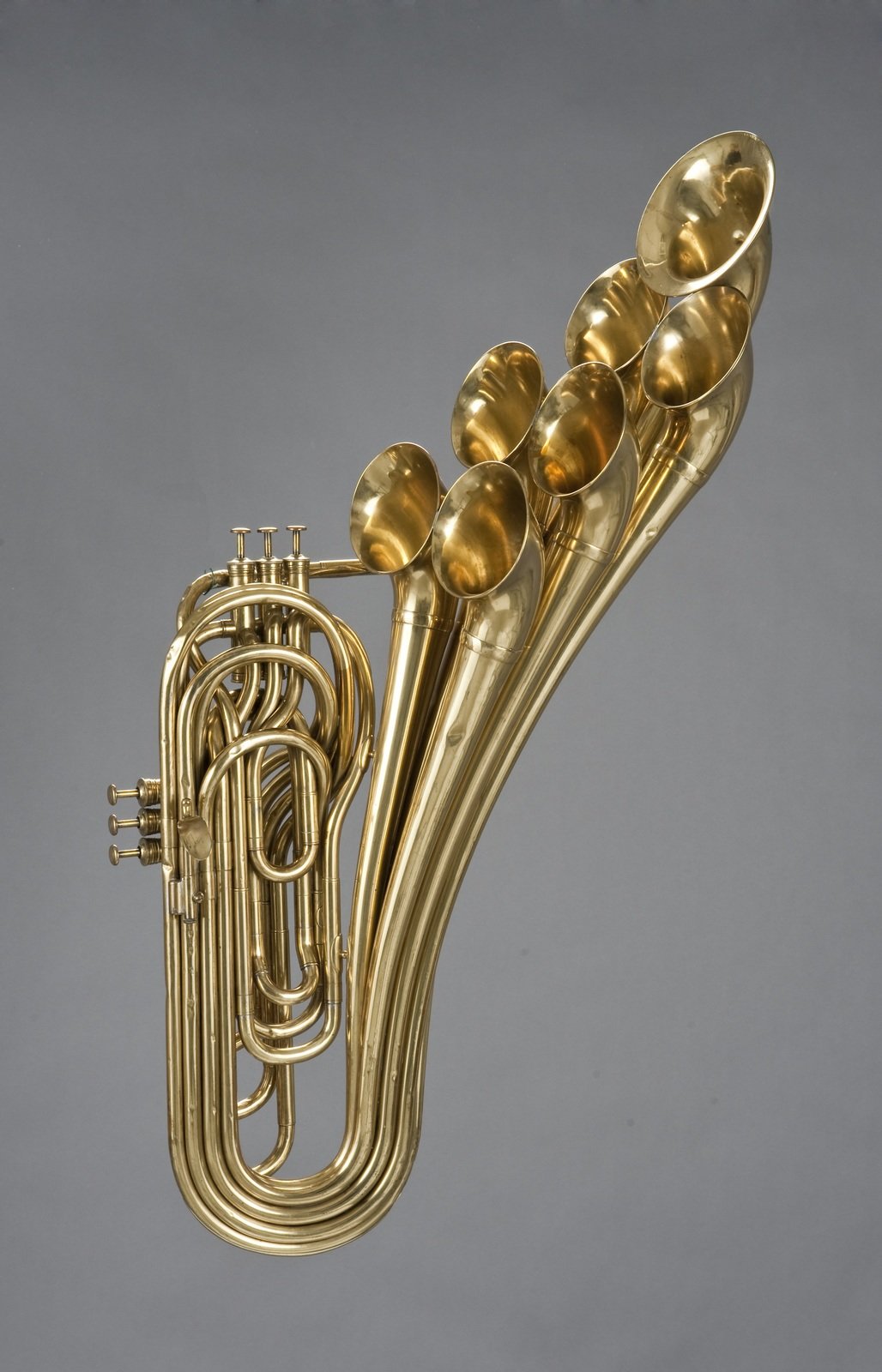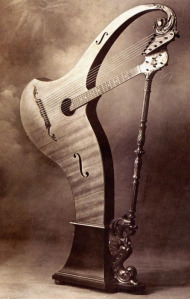This last academic year I have had the personal and professional pleasure of working with Dr. Grey Brothers as the accompanist for Choral Union, the freshman choral group he founded and directs at Westmont College. Years back as an undergrad, Grey was my choir director, voice teacher, and musicology professor, and this year he retires from Westmont to (presumably) spend more time with his impressive collection of berets. In honor of my friendship with Grey and in commemoration of his time at Westmont, I composed a piece entitled “The Sleepers Shall Rise” for Choral Union, which was premiered at the Vocal Chamber Concert in April.
Lyrics
George MacDonald
For the text of “The Sleepers Shall Rise” I used a four-stanza poem by Scottish poet and mystic George MacDonald (1824-1905):
Illustration by Arthur Hughes of the elder Princess Irene at her spinning wheel for the 1908 edition of The Princess and Curdie.
“The stars are spinning their threads,
And the clouds are the dust that flies,
And the suns are weaving them up
For the time when the sleepers shall rise.
The ocean in music rolls,
And gems are turning to eyes,
And the trees are gathering souls
For the day when the sleepers shall rise.
The weepers are learning to smile,
And laughter to glean the sighs;
Burn and bury the care and guile,
For the day when the sleepers shall rise.
Oh, the dews and the moths and the daisy red,
The larks and the glimmers and flows!
The lilies and sparrows and daily bread,
And the something that nobody knows!”
This enigmatic poem appears within MacDonald’s children’s fantasy novel The Princess and Curdie (1883), the sequel to The Princess and the Goblin (1870-72). In Chapter 8 “Curdie’s Mission", the young protagonist, a miner boy named Curdie, makes his way to the highest tower of a castle which he knows to be the workroom of the elder Princess Irene, an uncanny and mysterious “wise woman” character who has summoned him. (MacDonald has a penchant for these powerful yet unsettling female figures, from the good fairies of his fairy tales to the Wise Woman of The Double Story (1875) and the title character of At the Back of the North Wind (1868-71).) Curdie finds her at a spinning wheel, which flashes with light as it turns, impressing upon Curdie through its rhythmic movement a soul-stirring, emotional transcendence that he struggles to make sense of.
“Then the lady began to sing, and her wheel spun an accompaniment to her song, and the music of the wheel was like the music of an Aeolian harp blown upon by the wind that bloweth where it listeth. Oh, the sweet sounds of that spinning wheel! Now they were gold, now silver, now grass, now palm trees, now ancient cities, now rubies, now mountain brooks, now peacock’s feathers, now clouds, now snowdrops, and now mid-sea islands. But for the voice that sang through it all, about that I have no words to tell. It would make you weep if I were able to tell you what that was like, it was so beautiful and true and lovely. But this is something like the words of its song...”
Highly influenced by German Romanticism, MacDonald writes in a way that is simultaneously overwhelming, musical, childlike, and even alienating. The first stanza uses metaphors of spinning and weaving – a folk culture activity with enormous symbolic capital in Romanticism – and metaphorically connects them to the shifting, spinning, swirling phenomena of stars, clouds, and suns. The spiritual import and mysteriousness of nature continues into the second stanza as MacDonald anthropomorphizes the ocean, gems, and trees who are in the process of developing, growing, evolving. Actually it is unclear whether it is the natural world that is “becoming” or whether Curdie is merely becoming more aware of something that has been there all along. In the third stanza, MacDonald the preacher comes to the fore by focusing the processes of growth within the human soul, with a nod to the restorative Psalm 126:5 (“Those who sow with tears will reap with songs of joy”), and a characteristic emphasis on the holiness of laughter. In these first three stanzas, the final line speaks of the time or day “when the sleepers shall rise”, which reminds me of one of the central themes in MacDonald’s last major work of fiction, Lilith (1895). In the final stanza the poem erupts into a childlike list of objects; while it appears almost nonsensical, it can be interpreted as vitally meaningful, suggesting deep connections in a series of evocative images. The poem remains open-ended to the end, replacing the last line about waking from sleep with a “something that nobody knows”. (This reminds me of German poet Friedrich Klopstock’s Das Rosenband (1752) which states “I felt it well, and knew it not” [Ich fühlt' es wohl, und wußt' es nicht.]). As the narrator of Curdie and the Princess states, the words of the poem are a pale reflection of the deeply affective experience that Curdie is having in the presence of Princess Irene, and their literal meaning is almost ancillary to the expression of their power.
My Additional Stanza
My setting of “The Sleepers Shall Rise” includes an additional stanza inserted between MacDonald’s third and fourth verses, which I wrote myself:
“In the rainbow’s nest lies the key of gold
To the land of the shadows grey.
Oh, dear brothers, oh sisters, love is the whole
For those who believe and obey.”
I sought to match MacDonald’s elusivity, in part by stitching together several themes from his other writings. The reference to the “rainbow’s nest”, the “key of gold”, and the “land of the shadows” come from one of my all-time favorite MacDonald fairy tales, The Golden Key (1867), which begins with the simple lines: “There was a boy who used to sit in the twilight and listen to his great-aunt's stories. She told him that if he could reach the place where the end of the rainbow stands he would find there a golden key.” From this simple beginning, MacDonald sends two child protagonists into a dazzling world of mystical symbolism that moves beyond time and space.
The line “love is the whole” was lifted from the first line of Love is Home (1855), a five-stanza poem which rhapsodically addresses Love, finding it everywhere, particularly the diversity of nature and the longings of the human heart. The first stanza begins, “Love is the part, and love is the whole; / Love is the robe, and love is the pall; / Ruler of heart and brain and soul, / Love is the lord and the slave of all!” Again, we see MacDonald’s penchant for uniting dichotomies: part-whole, life (“robe”)-death (“pall”), heart-brain-soul, lord-slave.
Lastly, for MacDonald the concept of “believe and obey” was vitally important, though perhaps easily misconstrued. In many ways they signal his view that true maturity or progress necessitated a return to the simplicity of childhood, to a state of being that merely believed in the reality of a loving God and that merely obeyed whatever “still, small voice” prompted actions that brings that love to space and time. Such an idea crops up often in his children’s fantasies and pseudo-autobiographical novels, and is presented on the one hand scathingly in his Unspoken Sermons (1885), especially “The Truth in Jesus” from Series Two, and on the other hand in a disarmingly elementary dialogue in the poem Willie’s Dilemma (1855).
Illustration “Foamless Sea of Shadows” by Ruth Sanderson from 2016 edition of MacDonald’s The Golden Key.
Music
Folklike Tune
I wanted the music to have a face-value simplicity to it, but in a way that leaves the door open to mystery and suggestibility. Each verse therefore makes use of a lullaby-like tune in 6/8, which appears with subtle variations each verse. For all the MacDonald stanzas the tune is in the Dorian mode, minor and with a rather Pirates of the Caribbean-esque lowered seventh, but shining with unexpectedly bright major IV chords like flashes of light glancing off of Princess Irene’s spinning wheel. It is at the penultimate verse (of which I wrote the poetry) that the mood of the piece changes, as though a key has been turned and the rainbow is shining with new, never before seen colors. Here I use the warmer Mixolydian mode, nestling the melody in the altos before fragmenting with staggered entrances at the words “Love is the whole”. The final verse shifts back to Dorian, but now modulated up a whole step and delivered in a more pressing and rhapsodic manner.
Spinning Wheel
The image of Princess Irene using her spinning wheel as an accompaniment to her singing provided inspiration for my conception of the collaborative piano part. There is a rich history of pianistic depictions of spinning wheels, such as Franz Schubert’s 1814 Lied “Gretchen am Spinnrade”, Albert Ellmenreich’s pedagogical standby “Spinnliedchen” (ca. 1863), and Scottish composer Erik Chisholm’s “Spinning Song” from his 1944 collection of preludes “At the Edge of the Great World”. At the onset I imagined the wheel oscillating as if in slow motion, drone-like open fifths rocking slowly between the right and left hands. The writing becomes more dynamic in subsequent verses, with rolling eighth-note arpeggiations in the second verse, and dizzying sixteenth-note filigree in the third. In the fourth (Mixolydian) verse the piano shifts from spinning motion to static blocks: pillars of sound that take Ossian-like strides to new vistas. The final verse returns to the energy of a spinning wheel in full force, the open fifths of the beginning now “power chords” that pound out the “something that nobody knows”.
Gaelic Waulking Song
I have a deep appreciation for folk musics, and decided to intersperse my music with a Scottish Gaelic song entitled Mhòrag ' s na horo gheallaidh [vo:rag sna horo ʝauLɪ]. (Here is a performance by Clannad. Note the variations in words.) This is a waulking song, a work song typically performed by groups of women who sang it while sitting in a circle beating and rotating newly woven tweed against a table to shrink it and make it waterproof. I saw the song as a fruitful connection to MacDonald’s Scottish provenance and complimenting the symbolism of Princess Irene at the spinning wheel as another example of music and storytelling through pre-industrial, female labor. In general waulking songs are highly rhythmic so as to coordinate the movements of the workers, feature vocables such as “horo” or “him ò”, and are sung in Gàidhlig (Scottish Gaelic) with solo verses and group refrains. The lyrics of Mhòrag as they have been written down are enigmatic, describing cattle herding, lamenting separated lovers, and possibly signaling an encoded reference to Prince Charles during the Jacobite Uprising. For this composition I used only the refrain – or sèist – working off of a 1998 edition from a collection by Deborah L. White. The melody appears between verses in “The Sleepers Shall Rise”, coalescing from fragments in the piano to a stirring choral rendition after verse three.
It was a joy to create this piece, and to work with Grey and Choral Union to bring it to life! I uploaded a full performance of the piece from the Vocal Chamber Concert to my musicking page. Enjoy!
























